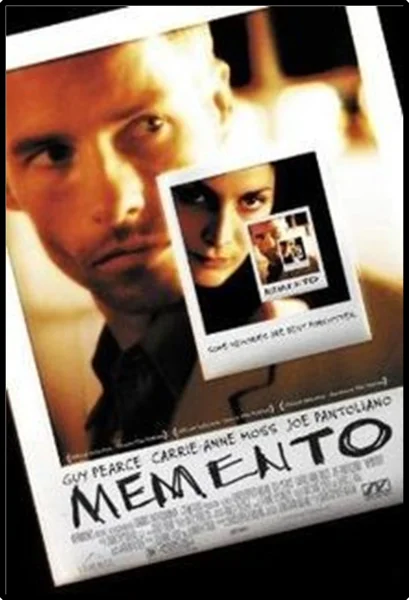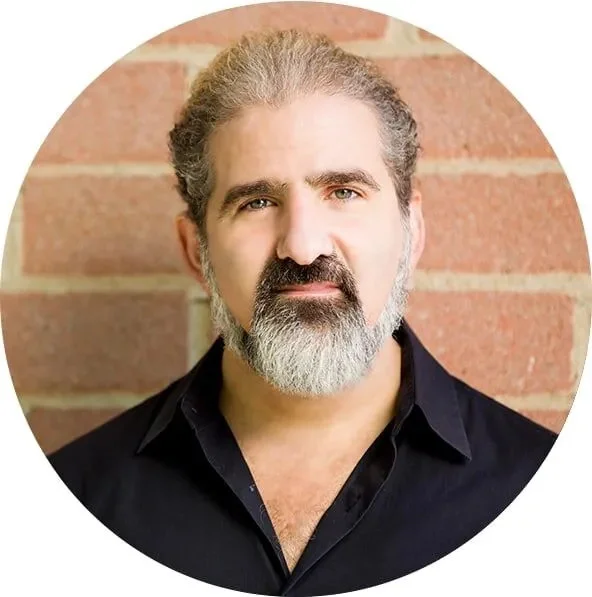
Lesson Screenwriting ABCs Storytelling
Using Flashbacks effectively in your Screenplay
by Jacob Krueger - Jacob Krueger Studio
Screenwriting Lesson, 5 pages
Viewed by: 39 Residents and 166 Guests

100 Rules & How To Break Them:
Don't Use Flashbacks
By Jacob Krueger
 As any screenwriting teacher will tell you, flashbacks almost always mean big trouble for young writers.
As any screenwriting teacher will tell you, flashbacks almost always mean big trouble for young writers.
No matter how exciting their content may seem to be, by their very nature flashbacks almost always kill the drama of a story, distracting both writer and audiences from what is most important in a script: the main character’s present day journey.
For this reason, it’s become dogma among screenwriting gurus, enlightened producers, and film professors that flashbacks should be avoided at all costs.
Good advice. Except for the fact that sometimes flashbacks just plain work.
Can you imagine what would happen if the writers of great films like Memento, Sophie’s Choice, or Blue Valentine had clung to the rules about avoiding flashbacks?
Their films would have lost some of their most powerful elements– and possibly never even been written in the first place.
While avoiding flashbacks may be a good rule of thumb for keeping you out of trouble, the real question is not whether or not you should use flashbacks, but how they are affecting the drama of your story.
Deciding whether or not flashbacks are working in your screenplay is not about simply following a rule.
It’s about developing a nuanced approach, based on your intentions for your project, the visual language of your writing, and the shape of your story.
That means understanding the problems flashbacks pose, so you can make sure the flashbacks in your story are propelling things forward, rather than stopping your movie in its tracks.
Dancing With The Devil
Flashbacks can be extraordinarily powerful storytelling devices. But they’re also dangerous territory for young writers. For this reason, many screenwriting gurus insist on rigid rules that scare young writers away from using flashbacks at all. While that will definitely keep you out of trouble, it probably won’t bring out your best writing either.
So if flashbacks are calling you, there’s nothing wrong with dancing with the devil in your writing. Just make sure you understand him first.
Here are the top three reasons why flashbacks can be dangerous for young writers:
Reason #1: Movies move! And a lot faster than you think.
Generally, when movies are working, they’re hurtling forward at a breakneck pace, propelling your character on the most powerful journey of his or her life in a mere 100 pages.
Flashbacks can stop this forward motion and reverse the momentum of your story, driving your character’s journey backwards when you want it to be moving forwards.
Imagine if you were driving your car at 100 miles per hour, and suddenly slammed it into reverse. That’s exactly the effect that a poorly executed flashback has on a screenplay—killing the transmission just when things were finally starting to get moving.
Reason #2: Exposition Is Boring
Nine times out of ten, flashbacks exist in a movie purely to explain stuff to the audience. We call this stuff exposition, and it absolutely kills drama.
No matter how exciting the content of your flashback may seem, if it exists only to explain stuff to the audience, it’s probably not going to have the effect you intended.
Audiences come to movies to watch drama—a character pursuing something they desperately want in the face of seemingly insurmountable obstacles—not to find out information about stuff that happened a long time ago.
Watching a movie filled with expository flashbacks is the equivalent of having an annoying friend whispering in your ear the whole time, explaining why things are happening, instead of just letting you experience the character’s journey.
Reason #3: If You’re Focused On The Audience, You’re Not Focused On The Character.
Even more dangerous than the problems flashbacks can pose for your audience is the confusion they can create for you as a writer.
Whether you’re working on your first script or your hundredth, the biggest challenge of every screenplay is the same—creating the most powerful journey you can for your character.
This means stepping into your character’s world, and seeing the story through your character’s eyes. Which is impossible to do if you’re spending all your time thinking about the audience.
Most likely, your character is well aware of his or her past. And if he or she spends all her time moping about it, the chances are they’re not going to go on much of a journey.
Unless your character is a time traveler, his or her journey can only happen in the present— since it’s only in the present that your character can make choices that matter. In the words of Shakespeare, “what’s past is prologue.” The past is inherently undramatic, because there is nothing the character can do to change it.
By depending on flashbacks young writers often unwittingly rob themselves of the opportunity to dramatize the character’s journey in the present.
Because flashbacks by their very nature interrupt the flow of your story, they can trick you into thinking your character is changing, when they are actually treading water. It seems like so much dramatic action is happening—but actually what the audience is experiencing is a bunch of smoke and mirrors. The movie isn’t happening. It’s already happened.
By abstaining from flashbacks, you force yourself to make the past present—to keep your eye on the journey of your main character, and to dramatize the action of his or her journey in the present day story, rather than relying on flashbacks to create the feeling of drama for you.
Flashbacks Are Dangerous. But That Doesn’t Mean You Should Fear Them.
It’s true that flashbacks can be hostile territory for young writers. But there’s no doubt that some of the greatest movies ever could never have been written without them. The best writers know they don’t have to fear flashbacks. They simply need to find ways to use them that enhance their character’s present day journeys.
Making the Past Present
What do Blue Valentine, Memento, and Sophie’s Choice have in common?
They’re all chock full of flashbacks. Yet not one of them suffers from the problems we’re supposed to be so worried about when using flashbacks.
Somehow, the writers of these films have managed to keep their stories driving forward, despite having a vast amount of the plot take place in the past.
And as a result they not only succeed in spite of flashbacks, they’re better movies because of them.
So how did these movies succeed when so many others failed?
Flashbacks get in the way of your storytelling when they start to drive the action of your story backward. That means if you’re going to succeed with flashbacks you’re going to have to find a way to make the past feel present.
In their own ways, Blue Valentine, Memento, and Sophie’s Choice all manage to do the same thing: take the information contained in the past, and translate it into a form that feels like it’s happening in the present.
Flashback Your Character, Not Your Audience
The first key to making the past present is making sure your flashback is happening for your character, and not just for your audience.
Flashbacks that exist only to give the audience information by their very nature undercut the structure of your movie, by taking both your and your audience’s eyes off the primary element of structure: your main character’s present day journey.
On the other hand, by forcing your character to a point where they have no choice to flash back at this moment, you cause your character to deal with the flashback in the present— driving the action of your present story forward even as you flash back to the past.
Past Becomes Present In Sophie’s Choice, Blue Valentine and Memento
Think about Sophie’s Choice. A long time ago, while a prisoner in a concentration camp, Sophie was forced to choose between her two children: which would live, and which would die.
But it’s not until the action of the present day story forces Sophie to once again to make an impossible choice (this time between two men who love her)– that Sophie finds herself revisiting the memory she’s been running from. We flash back at the same moment Sophie does. And for this reason, the past feels present.
In Blue Valentine the same effect is achieved through echoed images and parallel moments, which force the main characters to remember the birth of their relationship, even as its falling apart.
And in Memento it’s the journey of reconstructing his past that leads the character to remember those past events—right now, in the present day story.
Earn Your Flashbacks
One of the keys to making sure your flashbacks exist for your characters and not just for your audience is to ask yourself the following question:
Could your character have flashed back to this memory a few minutes earlier or a few minutes later in the story?
If your character could have flashed back at any time other than this moment, there’s a good chance that you are that you’re yet earning your flashbacks.
And most likely those unearned flashbacks are just sitting there like the unneeded information they are, interrupting the flow of your story.
That doesn’t mean you have to kill your flashback. It just means you have to push your character harder—until they have no choice but confront the memory, whether they want to or not
Just The Beginning
Of course, there are many other ways you can make flashbacks work in your screenplay. As in Blue Valentine, you can build two linear stories, and use the tension between them to create a sense of drama.
As in Memento, you can build your flashbacks as a mystery, and slowly reveal the information in a way that affects your character’s present day journey.
And as many writers in my classes have learned, you can play around with flashbacks during the early stages of writing your screenplay, even if you don’t know if or how they’re going to fit into your final draft.
When a Flashback Comes To You, Write It
Even if it never makes it into the final draft of your screenplay, following your instincts with flashbacks can help you get in touch with your characters, understand their desires, flush out their secrets, and identify their weaknesses.
Sometimes, you’ll find that following your instincts leads to a flashback that fits perfectly into your movie. And other times, you’ll have to work to make it feel present, either by earning the flashback, or translating its most exciting elements into the present day journey of your character. As with all writing, when dealing with flashbacks the important thing to remember is not to play by the rules—not mine or anyone else’s—but to listen to your characters, follow your instincts, and take the gifts your writing gives you.
To follow Jacob Krueger's blog or learn more about his Screenwriting Workshops, Online Classes, and International Retreats please visit WriteYourScreenplay.com.
-------------------

ABOUT JACOB KRUEGER
The founder of Jacob Krueger Studio, Jacob has worked with all kinds of writers, from Academy and Tony Award Winners, to young writers picking up the pen for the first time. His writing includes The Matthew Shepard Story, for which he won the Writers Guild of America
Paul Selvin Award and was nominated for a Gemini
Award for Best Screenplay.
"Jacob Krueger is a true collaborator, totally dedicated to the project, leaving his ego behind, but nevertheless demanding the highest standards because of his sharp dramatic sense and intuition.”
— Claude Michel Schonberg
Composer, LES MISERABLES, MISS SAIGON
Jacob teaches screenwriting in NYC, online and throughout the world for students of all levels.
More info: WriteYourScreenplay.com




